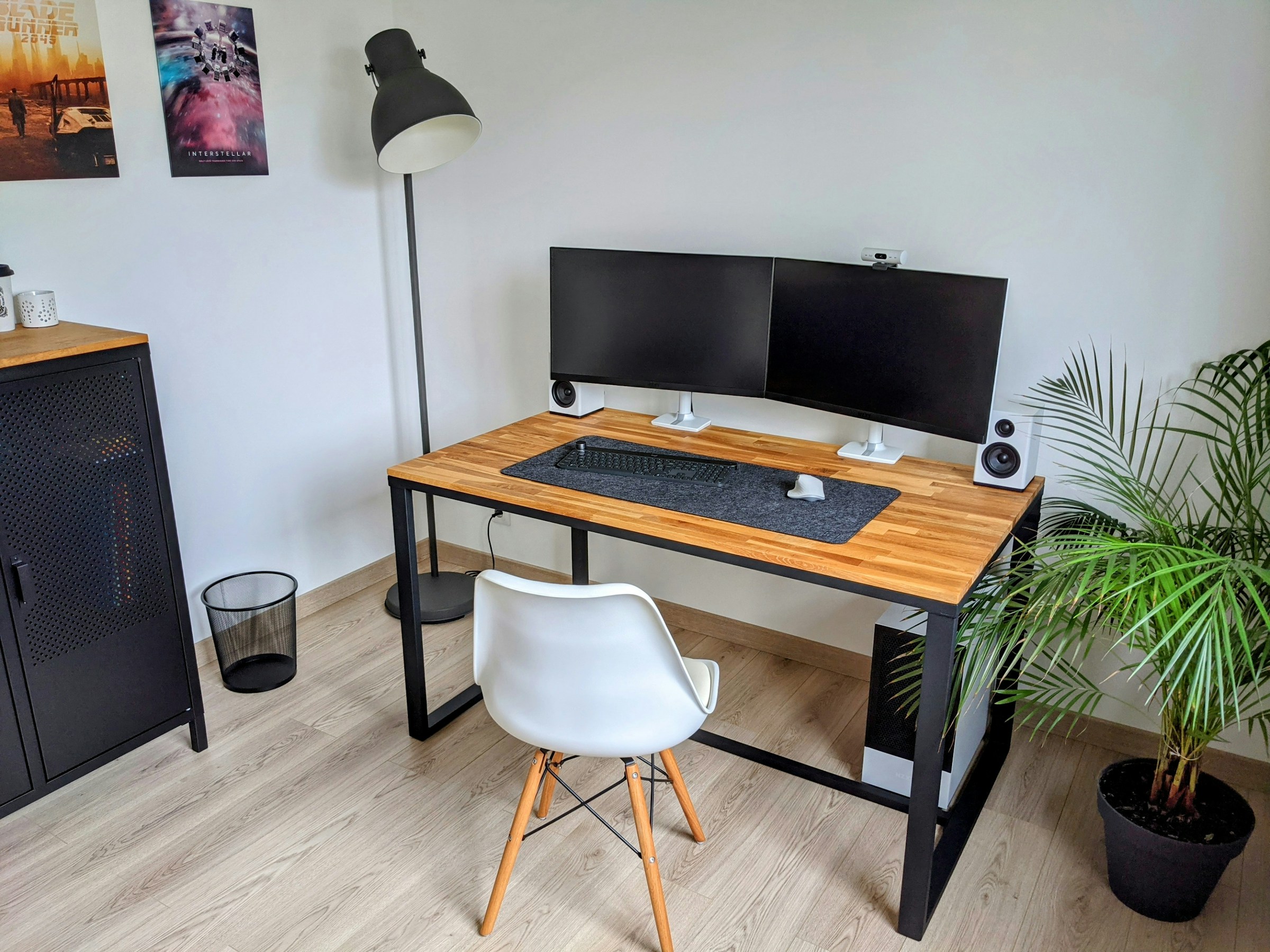Wayfair attracts over 21.7 million active shoppers focused exclusively on furniture and home decor, offering a niche marketplace that minimizes competition from unrelated product categories. Its category-specific model increases visibility and conversion rates for home goods manufacturers compared to general platforms. For brands aiming to grow online sales in a targeted environment, Wayfair presents a strategic opportunity. Learn how to sell on Wayfair to leverage its platform and reach high-intent home-focused buyers.
Top 6 reasons to choose Wayfair for your home goods business
For manufacturers evaluating marketplace options, Wayfair offers these key advantages:
- Built-in demand from motivated buyers – Millions visit Wayfair specifically seeking home goods.
- Curated marketplace with less competition – With only 23,000 suppliers versus millions on general marketplaces, your products face less direct competition.
- No competition with platform-owned brands – Wayfair doesn’t create competing products to undercut partners.
- Wholesale pricing model without fees – Wayfair purchases wholesale and handles retail pricing, eliminating marketplace fees.
- Specialized logistics network – Shipping options designed specifically for furniture and bulky items.
- Higher average order values – Home goods command higher price points, leading to larger transaction values.
These advantages create an environment where quality manufacturers can thrive without constant price wars.
Access to over 22 million engaged shoppers
Wayfair’s 22+ million active customers represent a uniquely valuable audience for home goods manufacturers. Unlike casual browsers, they visit the platform specifically seeking furniture and decor, creating intent-driven traffic with higher conversion potential.
The typical Wayfair customer is a homeowner or dedicated renter invested in creating quality living spaces. They prioritize design, durability, and value over simply finding the lowest price, allowing manufacturers to showcase craftsmanship rather than competing solely on cost.
Wayfair shoppers also demonstrate strong brand loyalty, with repeat purchases forming a significant percentage of sales, creating sustainable long-term value for manufacturing partners.
Understanding Wayfair’s business model
Unlike conventional marketplaces that charge listing fees and commissions, Wayfair functions more like a traditional retailer with a digital storefront, purchasing products at wholesale prices and managing the entire customer experience.
This creates four key distinctions for manufacturers:
- Wayfair handles marketing, pricing, promotions, and customer service.
- Manufacturers provide wholesale costs and ship directly to customers.
- The platform manages payments, taxes, returns, and communication.
- Wayfair’s logistics network facilitates efficient shipping for large items.
This arrangement allows manufacturers to focus on product quality and fulfillment while Wayfair manages retail operations, letting each partner focus on their core strengths.
The wholesale pricing advantage
Wayfair’s wholesale model offers a refreshing alternative to commission-based structures. Rather than charging account fees, listing fees, and per-sale commissions, Wayfair simply purchases products at wholesale rates determined during onboarding.
This creates four key financial advantages:
- Predictable margins without fee fluctuations
- No charges for non-selling inventory
- Protection from price wars
- Consistent wholesale pricing across channels
For manufacturers accustomed to seeing marketplace fees consume 15-30% of retail prices, Wayfair’s model typically delivers more predictable economics.
“Unlike Amazon, where sellers control pricing, Wayfair sellers must carefully calculate their wholesale margins to ensure profitability after price adjustments.”
Fulfillment options that scale with your business
Wayfair offers multiple fulfillment approaches to accommodate different business needs:
- Standard dropshipping – Ship directly to customers using Wayfair’s shipping partners while maintaining inventory control.
- CastleGate Fulfillment – Wayfair’s warehousing solution offering two-day delivery to 97% of customers, boosting search visibility and customer satisfaction.
- Wayfair Delivery Network – Specialized logistics for large furniture and fragile items, reducing damages through optimized routing.
- International fulfillment – Support for cross-border sales through Wayfair’s global presence.
These options address the unique challenges furniture presents in shipping and handling, with solutions specifically designed for home goods.
Tools and support for seller success
Wayfair provides partners with specialized tools to manage and grow their business:
- Partner Home Dashboard – Central control for inventory, orders, and performance metrics
- Analytics and reporting – Insights into sales patterns and customer behavior
- Listing optimization support – Guidance for creating effective product presentations
- Dedicated account managers – Available for high-volume sellers
These resources help manufacturers refine their strategies using performance data, with tools specifically designed for furniture and decor sellers’ unique needs.
Marketing opportunities and visibility
Wayfair invests heavily in marketing, spending more than half its profit on advertising to drive qualified traffic to the platform. This benefits all sellers with exposure to motivated home goods shoppers.
The platform offers four targeted marketing opportunities:
- Sponsored Products – Pay-per-click advertising for search visibility
- Sponsored Shops – Branded storefronts showcasing full product lines
- Display Ads – Premium placement throughout the Wayfair ecosystem
- Promotional campaigns – Participation in sales events and seasonal promotions
Sellers using these tools report up to 520% more orders compared to those who don’t, demonstrating their significant impact on visibility and sales.
Real-world success stories
Many manufacturers have transformed their businesses through Wayfair partnerships. Modway, a mid-sized furniture manufacturer, expanded from wholesale operations to becoming a Wayfair best-seller, achieving 300% year-over-year growth and establishing national recognition through the platform and CastleGate fulfillment.
Mercury Row, a contemporary furniture brand, used Wayfair’s marketing tools to target millennial apartment dwellers, becoming one of the fastest-growing brands in urban markets.
These success stories share common elements: quality products, optimized listings, reliable fulfillment, and strategic marketing. By focusing on these fundamentals, manufacturers across price points have built sustainable businesses on the platform.
Step-by-step guide to joining Wayfair
Becoming a Wayfair partner requires approval through a selective application process:
- Apply via Partner Portal – Submit business information and product details
- Product evaluation – Wayfair assesses quality, pricing, and category fit
- Catalog creation – Upload product data, images, and descriptions
- Pricing setup – Establish wholesale costs and shipping arrangements
- Launch and optimize – Begin selling and refine based on performance
The review typically takes 1-3 weeks, with successful applicants receiving comprehensive onboarding materials. This selective process maintains Wayfair’s reputation for quality home goods.
Optimizing your Wayfair listings for success
Creating effective listings is crucial for visibility and conversion. Wayfair’s algorithm prioritizes listings with:
- Comprehensive specifications – Complete dimensions, materials, and features
- High-quality imagery – At least 5+ professional photos showing multiple angles
- Benefit-focused descriptions – Content helping shoppers envision products in their homes
- Strategic keywords – Terms matching how customers actually search
Top-performing listings tell a product’s story beyond specifications, highlighting craftsmanship and practical applications—aligning with the considered purchase journey typical of furniture shoppers.
Conclusion
For home goods manufacturers seeking expanded online distribution, Wayfair offers a compelling combination of advantages: targeted audience, specialized infrastructure, and a business model designed specifically for furniture and decor categories.




